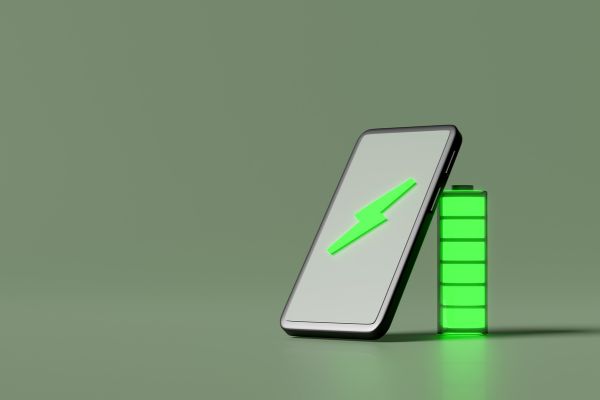Smartphones have become an integral part of our lives, helping us stay connected, work, learn, and entertain ourselves. However, one challenge that smartphone users often face is the device’s battery life. As smartphones become more sophisticated, they also become more power-hungry. This article provides twenty practical tips on how to maximize your smartphone’s battery life, enabling you to make the most out of your device throughout the day.
Adjust Screen Brightness
The screen is one of the most power-consuming parts of a smartphone. You can save battery by reducing the brightness level. Most phones also have an auto-brightness feature that adjusts the screen brightness based on ambient light conditions.
It is also beneficial to set a shorter screen timeout. The less time your screen spends being on, especially when not in use, the more battery you’ll save.
Consider using dark mode if your phone supports it. Dark mode uses less energy, especially on OLED screens, as they light up individual pixels and black pixels remain unlit.
Disable Unnecessary Notifications
Every time your phone receives a notification, the screen lights up, and a sound or vibration occurs, all of which consume energy. Turning off unnecessary notifications can therefore significantly save battery life.
To do this, go to your settings and select the apps you wish to stop sending notifications. This not only saves battery life but also reduces interruptions during your day.
Remember, it’s not necessary to disable all notifications. Prioritize your apps and disable notifications for the less important ones.
Manage Background Apps
Many apps run in the background even when not in use, consuming battery life. These include email apps that continually sync to bring new messages, news apps that update content, and social media apps that fetch new posts.
Go to your settings and find the list of apps running in the background. Consider stopping those that are not needed.
Remember not to force close all apps as this might lead to more battery usage. Some apps are designed to stay in the background, and constantly closing and reopening them can consume more power.
Use Wi-Fi Instead of Cellular Data
Wi-Fi consumes less power than cellular data. Whenever possible, connect your phone to Wi-Fi instead of using mobile data.
However, remember to turn off Wi-Fi when not in use or when out of range, as your phone wastes energy trying to connect to known networks.
Also, consider disabling push emails when connected to mobile data. Manually fetching emails or setting longer fetch intervals will consume less power.
Turn Off Dynamic Backgrounds and Animations
Dynamic backgrounds and animations might make your phone look cool, but they consume a considerable amount of power. This is because they use the phone’s graphics processing unit (GPU), which is a power-hungry component.
Instead, use static wallpapers and reduce the use of animations. You can find these settings in the display or accessibility options in your settings.
Remember, this doesn’t mean your phone has to look dull. There are many beautiful static wallpapers that you can use to personalize your phone.
Keep Your Apps Updated
Developers often release updates to their apps that improve their efficiency and reduce power consumption. Therefore, keeping your apps updated can help save battery life.
Also, newer versions of apps often come with new features that you can take advantage of.
Remember to update your apps over Wi-Fi to save mobile data. You can also schedule updates for a time when your phone is plugged in to save battery life.
Disable Location Services
Location services allow apps to know where you are, which can be useful for navigation or location-based reminders. However, these services consume a significant amount of power.
Consider disabling location services when not in use. You can also decide which apps have access to your location and which do not.
Remember that some apps require location services to function correctly. Disable location services for these apps only when you’re not using them.
Use Battery Saving Modes
Most smartphones come with battery-saving modes that reduce power consumption. These modes limit the functionality of your phone, but they can significantly extend battery life.
Consider using these modes when your battery is low and you’re not able to charge it.
Remember that these modes can limit important features. Understand what these limitations are before enabling these modes.
Keep Your Phone’s Software Updated
Just like app updates, software updates often come with optimizations that improve battery life. Therefore, keeping your phone’s software updated can help save battery life.
Also, software updates often fix bugs and improve security.
Remember to update your phone’s software over Wi-Fi and when your phone is plugged in to save battery life.
Limit Widgets and Live Tiles
Widgets and live tiles provide quick information without opening the app, but they consume power as they refresh in the background.
Consider limiting the number of widgets or live tiles on your home screen. Keep only the ones that provide essential information.
Remember that you can still access all your apps quickly from the app drawer or list without having them as widgets or live tiles on your home screen.
Reduce Push Email Accounts
If you have multiple email accounts set up on your phone with push enabled, your phone is constantly checking for new emails on multiple servers. This continuous syncing process consumes power.
Consider reducing the number of push email accounts on your phone. Alternatively, switch from push email to manual or fetch.
Remember to choose a longer fetch interval if you switch to fetch email. The longer the interval, the less power your phone uses to check for new emails.
Disable Unnecessary Hardware Radios
Your phone has several hardware radios, including Wi-Fi, Bluetooth, NFC, and GPS. These radios consume power even when you’re not using them.
Consider disabling these radios when not in use. For example, turn off Bluetooth when you’re not connected to a Bluetooth device.
Remember that you can quickly access these settings from the quick settings panel on most phones. This makes it easy to turn these radios on and off as needed.
Optimize Your Settings
Your phone has several settings that can affect battery life, including screen brightness, screen timeout, and volume levels.
Consider optimizing these settings for battery life. For example, set a shorter screen timeout and reduce the volume level when using headphones.
Remember that these settings can affect your experience of using the phone. Adjust them to a level that saves battery life but also lets you enjoy using your phone.
Use Light Versions of Apps
Many popular apps, like Facebook and LinkedIn, have lighter versions that consume less power and data. These apps are designed for areas with limited connectivity, but they can also help save battery life.
Consider using these lighter versions of apps if they are available.
Remember that these apps might not have all the features of the full versions. Check if they have the features you need before switching to them.
Avoid Extreme Temperatures
Your phone’s battery doesn’t like extreme temperatures, both hot and cold. Exposing your phone to extreme temperatures can reduce its battery life.
Try to keep your phone at room temperature as much as possible. Avoid leaving it in a hot car or using it in freezing weather.
Remember that using your phone while it’s charging can make it hot, which can reduce battery life. If your phone gets hot, let it cool down before using it again.
Keep Your Phone Clean
Your phone’s software isn’t the only thing that affects its battery life. The physical condition of your phone can also affect it. Dust and debris can get into your phone and interfere with its battery.
Keep your phone clean. Use a soft cloth to wipe its screen and case. If dust gets into its ports, gently blow it out or use a can of compressed air.
Remember to power off your phone before cleaning it. This will prevent any accidental inputs and also save battery life.
Use Your Phone Regularly
Batteries are designed to be used. If you don’t use your phone regularly, its battery life can decrease.
Try to use your phone a little bit every day. Even if you’re not making calls or sending messages, you can still check your emails or read the news.
Remember to charge your phone regularly. Even if the battery isn’t empty, topping it up can help maintain its health.
Avoid Constant Full Charges
Constantly charging your phone to 100% can stress the battery and reduce its lifespan. Instead, aim for a charge level between 20% and 80%.
Try to charge your phone before its battery level drops below 20%. And unplug it before it reaches 100%.
Remember that it’s okay to fully charge your phone sometimes. It’s just constant full charges that can harm the battery.
Power Off When Not In Use
If you’re not going to use your phone for a long period, like overnight or during a long flight, consider powering it off. This can save a significant amount of battery life.
Remember that powering your phone back on can take a few minutes and consume power. Therefore, this tip is only useful for longer periods of non-use.
Reset Your Settings
If you’ve tried everything and your phone’s battery life is still poor, consider resetting your settings. This can eliminate any software bugs that are causing high power consumption.
Remember to back up your data before doing this. Resetting your settings can erase your data.
Conclusion
There’s no magic trick to extend your phone’s battery life forever, but these tips can significantly help. Battery technology continues to improve, but until the day comes when a single charge lasts for weeks, managing the battery life of our devices remains an essential task. Remember, every device is different and may not include all the features mentioned here. Test out these different strategies to see what works best for your device and usage habits, and hopefully, you’ll find that you’re reaching for your charger a little less often.



